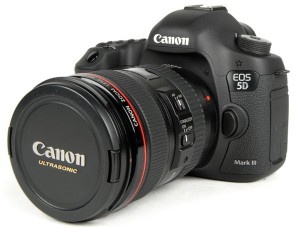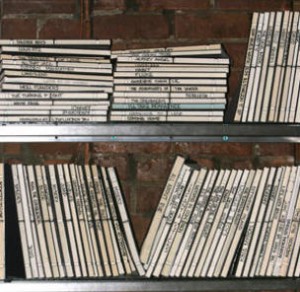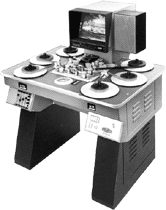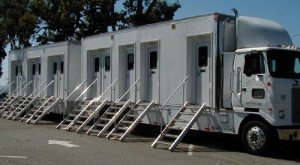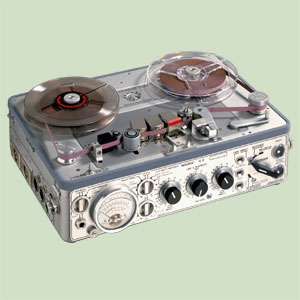About This Site:
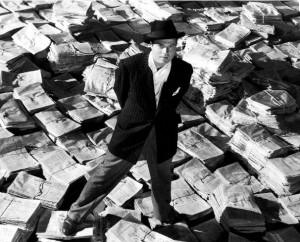
"I don't know how to run a newspaper, Mr. Thatcher. I just try everything I can think of." - Charles Foster Kane
"I don't know how to run a newspaper, Mr. Thatcher. I just try everything I can think of." - Charles Foster Kane
Citizen Kane stated it well – the best way to learn is by doing. The second best way is to watch someone else do it – and it doesn’t matter if they screw it up or do it magnificently. If the process is well articulated, you still have the lesson.
This is a "do it yourself" filmmaker blog. In the upcoming months, on this blog, you can watch me screw things up – and every once in a while, if we're lucky, you may see me do something magnificently. You can watch as I fail my way to competence – and hopefully – excellence.
I’m an entrepreneur from way back and I know how to fail (you should hear the stories). I also know how to succeed. Now it’s time to turn those hard won skills of business, storytelling and getting shit done, back to my first love, filmmaking.
You can read about my background and my personal journey to where I’m at today by clicking here.
At the moment of this writing, I’m involved in four film projects.
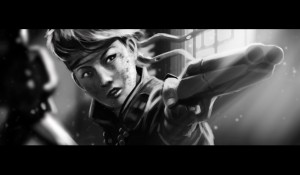 Project 1. A short, effects heavy narrative film with the working title, “Escalation.” I’m doing this to see how far I can take 3D and composited effects with very little money. I’m doing it in a 10 minute format and attempting to tell a fantastical story with believable characters within those parameters.
Project 1. A short, effects heavy narrative film with the working title, “Escalation.” I’m doing this to see how far I can take 3D and composited effects with very little money. I’m doing it in a 10 minute format and attempting to tell a fantastical story with believable characters within those parameters.
Project 2. A feature length documentary about German American citizens who were interned by the U.S. government during WW2. I’m doing this because I’m interested in how fear molds government policy AND my sister is directing it so I get to focus on camera, lighting and sound.
Project 3. A short dance film – This is happening because I’ve been filming dance since my daughter was tiny and I’ve been itching to take the dancers off the stage and put them in a fantastical world with music I love.
Project 4. A feature adventure film about a world where virtual reality is indistinguishable from reality. The story takes place in the same world as the first project on the list. I’ll be discussing the script, story and character as I work through my rewrites and head toward preproduction. This is also an effects heavy project. The short is a test to see how far we can go with CG for the feature.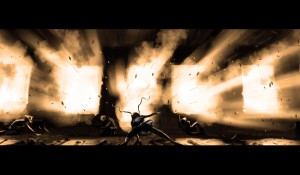
All of these projects are in different stages of development and will be moving forward simultaneously. I’ll be talking about them all as they progress.
It is my hope that some of you will come and work with me on these projects and that all of you will participate with feedback. I’m going to design some ways to make that happen that I hope will be worth your while.
My goal is to create a community of active, vocal filmmakers who are on this journey together.
I’ve written two “extended bonus articles” that you can download – no charge, just by Subscribing to my "Update List."
I've had a good deal of success in my online and offline businesses. These two “rather lengthy” articles will show you how the lessons I learned from building businesses and making money relate to filmmaking.
Article 1 - “How To Pay For Your Film”
How to get enough money to make a film without begging or losing control of your project. You can get this rather lengthy article here.
Article 2 - “How I Built An Opt-In Email List Of 50,000+ People” - Click here to download.
You only have to opt-in once to get the articles. They are free.
In addition to the extended articles above, I’m going to be covering the following topics on this blog as I progress through my projects.
I’m not a gearhead. My eyes glaze over when you start talking about compression rates, codecs, 10 bit this and 8 bit that – but I know it’s important and I continue to educate myself. However, there are few non-living objects that are as sexy as a tricked out movie camera. I’m going to show you my thinking process as we pick our cameras and gear for these shoots.
- Cameras
- Lenses
- Stabilization
- Dollies and Cranes
- Support Equipment
This is the part I love. All the tech in the world is useless if you don’t have a compelling story to tell. I’m going to show you scripts that I’m working on and open myself up to your comments and criticism. I’m not sure how healthy this will be for my ego, but if I’m going to make this an open forum about my projects, I might as well put everything out there – warts and all.
I’ll be talking about:
- Genre
- Outlining
- Script
- Character – character arc
- Archetypes
- Theme
- Outer Action vs. Inner Action
- Starting with the end in mind
III. Directing
Directing is why I’m here. Although film is a collaborative art, it is the Director who shapes the vision.
It is the Director who determines how to cover the story and the Director who picks and communicates with the Actors. I’ve seen plenty of bad acting in movies, but when I see it, I blame the Director. She is responsible for picking the right person for the job and helping to pull the performance out of them.
If the Actor is wooden or stilted, unbelievable or uninteresting, it’s the Director’s fault – assuming that Director has veto rights on their script and cast (which is a big assumption if it’s a studio film, but not one for mine since I control the checkbook – I’ll show you how to do this too).
Most of Directing is preparation. Here are the topics I’ll be discussing:
- Working with actors – rehearsals, exercises – improv to get subtext – video rehearsals – working with Actors who have different styles – some come from inside out and some from outside in.
- Camera coverage – how to go beyond, master, two shots and closeup.
- Storyboarding and Previs – when and where it’s needed
- Using camera moves to enhance the emotional impact of a scene.
- Mapping the shot coverage without storyboards
- Prep vs. Spontaneity.
- Documentary vs Narrative vs Improv
IV. Finance
This is the part that stopped me dead in my tracks and led me off in another direction, away from filmmaking, over 20 years ago. At the time, I bought into the idea that you shouldn’t EVER spend your own money on a project. I bought into the idea that you needed backers and investors and they would only work with you if you had experience or a distribution deal. I bought into the idea that even if I found a studio who wanted to make my movie and was willing to let me Direct, the likelihood of it ever getting to production was small to none.
Today, I see things very differently. First of all, I think you SHOULD spend your own money. I do NOT think you should bankrupt yourself. I think you should learn to shoot on the cheap and stay within your means.
Today, EVERYONE can afford to make a movie if they have good ideas, some elbow grease and the ability to persuade (I’ll be talking a lot about this last thing because it is a key element that is almost never discussed on film forums).
Yes, it’s possible to make a movie without spending a dime of your own money. That doesn’t mean everyone SHOULD make a movie – you need to learn your craft and find your voice – that requires some life lessons.
I also know how to raise money without begging and I’ve written about it in my free article, "How To Pay For Your Film" that you can download here.
The businesses that I’ve built in the past have taught me some hard lessons about what works and what doesn’t. They have taught me the kind of risks to take that won’t devastate your finances, your credit or your family. I’ll show you how to protect yourself from your own mistakes and the sue happy society we live in. I’ll teach you to manage your risks so that when you fail (which I guarantee will happen if you take any kind of focused action), you will be able to get back on the horse the next day and try it again.
Read the extended article I wrote on financing your film (click here).
Here are some of the topics I’ll be covering in the future about film funding:
- My method for funding films
- Crowdfunding
- Pooling your resources – How to get competent crew with gear to trust you.
- Hobby vs. Investment vs. Business — Avocation vs. Vocation
- Losing money – Get prepared, it’s going to happen, but it’s not the end of the world – I know from experience.
- Develop the attitude that “This is only a test” – I’ll teach you about what I call the snowball effect – how taking right action creates momentum – there is magic in boldness. How to learn from your failures and not be defeated by them.
- The 1 in 10 rule… fail your way to success.
- Your friends and family think you are a dreamer at best and irresponsible or crazy at worst. They are right, at least partially, you are a dreamer and probably downright nuts, but that is part of what it takes to become a filmmaker. How to do what you want when everyone is calling you crazy.
Oscar Wilde said, “The reasonable man adapts himself to the world; the unreasonable one persists in trying to adapt the world to himself. Therefore all progress depends on the unreasonable man.”
As filmmakers, we must endeavor to be unreasonable.

This is my rendition of a union Gaffer's electric screwdriver. Grips weren't allowed to touch things with plugs on them.
V. Lighting
When I was very young, I wanted to be a cinematographer for Jacques Cousteau. The images his crews brought back filled me with wonder. The closest I ever got to the Cousteau team was back when I was working as a grip in Los Angeles. We were doing a shoot on a fishing boat in Santa Barbara and the sound guy (I don’t remember his name) and I were the only two on the crew who weren’t down below deck throwing up – seasick. We stood on the prow of the industrial fishing boat and as we looked down at the waves as we glided along, he told me about recording sound for Cousteau. Apparently, when they were doing a project on whales, those magnificent creatures would breach next to their ship, over and over again for hours and sing their songs.
Maybe that is really a story about sound recording, but for me, it was an image that has stayed with me for over 20 years and reinforced my desire to create beautiful pictures that tell powerful stories.
As we progress on my projects, I’ll be talking about:
- Grip work
- DIY lights on the cheap
- On camera lights
- Old style incandescent lighting – I’ve worked many sets as a grip or gaffer hoisting lights and rigging into the grid.
- Metering (my love affair with spot meters and my Sekonic)
- Color design for shots
- Mood design and contrast ratios
VI. Cheap Special Effects
The first thing I did when I decided to do a short, effects heavy film was track down a quality composite and 3D guy who had the same vision as I and who would work inexpensively on my project because he loved the idea. I’ll show you how you can find crew members like this who will work on your projects – it’s not difficult, but there are some very important things to remember if you want to be taken seriously.
I know the basics of After Effects and some 3ds Max, but I’m a rank amateur compared to the guy I found. He has agreed to do some screen capture tutorials as we progress to show you how he’s putting the pieces together. We’ll show you before and after videos as well so you can see the pieces of the composite. We’ll show you how we prepared for the shot, how we shot it, and the pieces we used to compile the composite. We’ll also show you what we learned from the process.
Here are some of the topics we’ll be covering regarding special effects:
- Software we are using – After Effects, 3ds Max, Fume, etc. Why we picked what we picked, what it does and how much it costs.
- Building and paying for a greenscreen studio
- Composite design – picking your shots and adding multiple layers to create an entirely new world. This is very cool stuff – and not just for an FX person, but for Directors too.
- Deciding when a green screen is necessary and when a matte can be done without one.
When I was in film school, we shot and edited 16mm film. Using a Movieola or a Steenbeck with bins of clips surrounding you was the way it was done. I remember trying to hunt down tiny clips – sometimes just two frames – that were cut from an earlier version and spending hours on logging and keeping track of everything. When NLE editing programs were developed, everything changed and became a lot more fun… not to mention, way faster.
As we progress, you are going to hear about:
- My personal dilemma between FCP and PremierPro
- Pacing and story telling
- Sound and music editing
- Pre-production planning for more effective editing
VIII. Production
I’ve worked as Producer, Assistant Director and nearly every other roll in the production department including Production Assistant and Craft Service. These aren’t my favorite jobs and require a high level of organization and responsibility, but they are absolutely vital to anyone who wants to create Independent Film. This may be the most difficult job to outsource because it means your whole production comes to a halt if your lead production person doesn’t do their job.
I’m going to show you how my experience as an entrepreneur who runs multiple companies works with someone in this position. I’ll teach you how to properly define the job, set expectations accurately and find the right person to trust.
We are going to talk about production topics
- Location vs. Studio
- Scouting
- Previs
- Storyboards
- Mapping Shots
- Craft service – housing, meals, travel
- Crew size
IX. Selling Your Film
I don’t have any proof of this, but I believe that in most cases, deciding what you are going to do with an Independent project before you create it is a waste of time. Sure, you want to dream and you need to know your release venue to help you decide what kind of hardware to use to make your project. A YouTube release can be substantially lower image quality than a theatrical release.
NOT starting with the end in mind is different than my normal business philosophy.
One of the biggest mistakes *entrepreneurs* make is not having an exit strategy.
They work for years or decades trying to build a business, trying to make profitable deals and trying to make a living, but they don’t know what they are going to do with the business when they want to move on to the next one – and Entrepreneurs ALWAYS want to move on to the next one – eventually.
My observation is that Filmmakers do the opposite, they focus so much on the exit strategy, the distribution and sales, that they never get their film off the ground. They get discouraged and burned out before they expose the first frame.
Don’t worry about selling in the beginning. You’ve got to move forward and make the best possible film you can – that should be your TRUE exit strategy – a good film. Then you can worry about how to sell it – I’m going to show you some unconventional ways to make money with your project even if you don’t get Warner Brothers to pick it up. And selling it doesn’t have to be a horrible experience. I’m going to teach you ways to actually enjoy this part of the process… or at least tolerate it.
I’m also going to show you ways to market by building an audience (like I’m doing here with this website). Internet marketing is a blast and the most powerful tool I’ve ever seen for building a list of supporters. I have a list of 50,000 real estate investor emails who have all opted into my investing websites and asked me to give them more information. This constantly changing list has made me millions of dollars over the years. My plan is to build my filmmaking support group in a similar way and show you how you can do this for your own projects. By the way, I also wrote a long article on this subject titled, “How I Built An Opt-In Email List Of 50,000+ Fans” you can download it for free by clicking here.
I’ve got a lot to say about the business end of filmmaking even though it’s not the reason I came – it’s not the reason I’m doing all this. There are better financial investments than a film project, but sometimes it’s not about the money – you want to invest for a different kind of return. That’s what I’m doing and that is what most small investors do when they put their money into a movie.
Here are the ongoing topics related to selling your film that I’ll be covering as my projects progress:
- Building an audience
- Distribution
- Selling your product
- VOD – Amazon, Netflix and new opportunities that are arising daily
- Festivals
- Contests
- Information products
- How to talk – how to make deals. This is a vital part of becoming a filmmaker or entrepreneur if you want to make a living at it.
- Legal issues
X. Sound
This is the neglected orphan child of filmmaking. They say that bad sound in a movie is worse than a bad picture – they also say what your ears hear, your eyes believe – and I agree. We are going to be exploring the art and science of audio as it directly relates to my projects.
Here are the basic topics:
- Location and Studio Sync Recording
- Sound Effects
- Music
- Software options
XI. Production Design
Here are some topics I’ll be ruminating upon:
- Set Design
- Locations
- Props
- Art Direction
- Costume
- Makeup & Hair – I know this doesn’t normally get lumped into this category, but I think there is a strong argument for putting it here.
XII. The Philosophy of Filmmaking
“These are my principles. If you don’t like them, I have others.” Groucho Marx
I’m going to be infusing everything I discuss with my own hackneyed philosophical opinion of what it means to be a filmmaker. I’m sure many of you will disagree.
I’m excited about building this site, making my movies and writing these stories.
Why should you EVER do a project that you aren’t excited about? For the experience, NO – get experience on something you can get your heart behind.
If you want experience as a shooter or an editor or an FX creator, find a project that will display your talents and highlight your part in the project – find one that challenges you and sounds like a good time. Pick people you want to work with and quit thinking you need to suffer for your art or that you have to “pay your dues” – it’s just not true. If you love what you are doing, you will bust you butt doing the best film you are capable of and it won’t feel like work.
And if you are a writer, get excited about your story. If you’ve ever written anything before, you know that it’s easy to go through the motions and write junk down that doesn’t get your heart beating but just takes your story through another plot point. If you’ve ever written anything that you think is good, it’s probably because you came up with an idea that made you sit up with some fire in your heart. You knew it was good, you knew it was unusual, you knew it was fresh and will be sucked in by your audience.
I love watching Quentin Tarantino interviewed. He frequently talks about how ideas come to him. You can see his face light up – not just because of ego, but because he knows that the idea he just came up with was magic – powerful. I love to see that – you can’t fake that energy, it lights up a room and it is the fuel for all good stories.
I hope you will come along with me on this journey. It’s a trip I’ve waited to long to take.
Best Wishes,
Joe Crump
PS – Download the free reports I’ve written. These “rather lengthy” articles will teach you the lessons I learned from building businesses and making money and how it relates to filmmaking.
“How To Pay For Your Film”
How to get enough money to make a film without begging or losing control of your project.”
You can get this rather lengthy article here.
“How I Built An Opt-In Email List Of 50,000+ People”
Click to download this article.
You only have to opt-in once to get both free reports.
